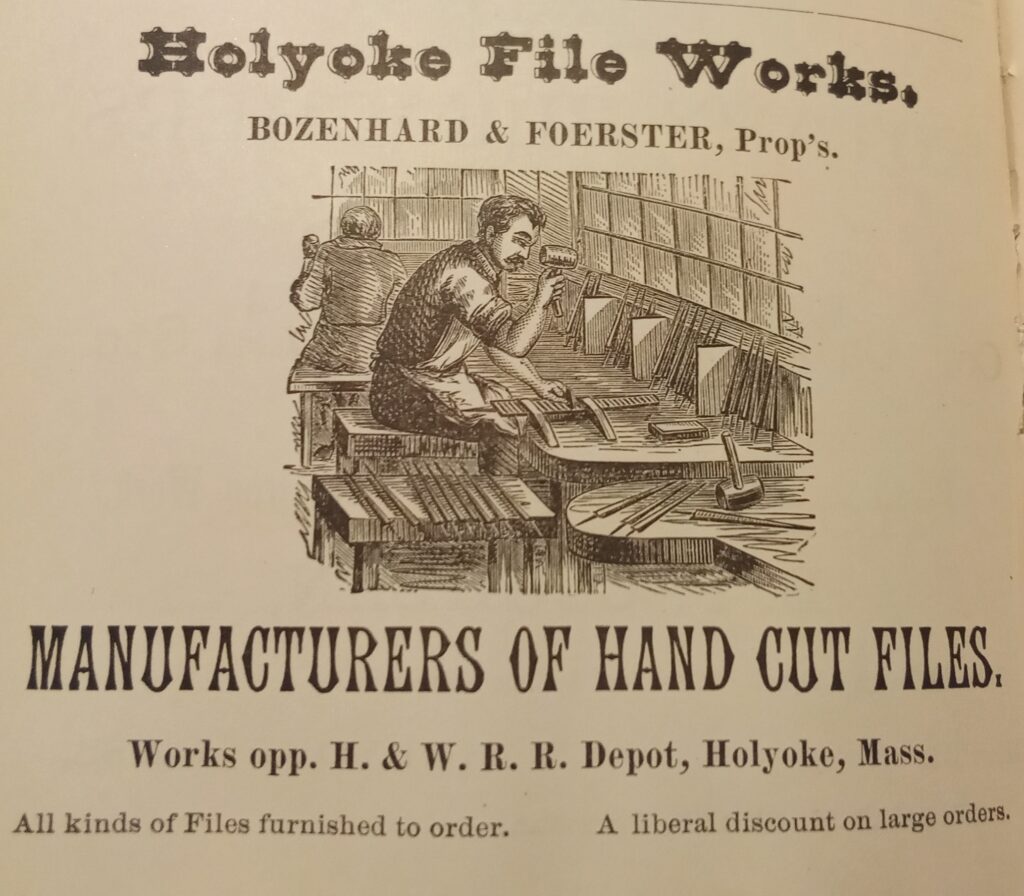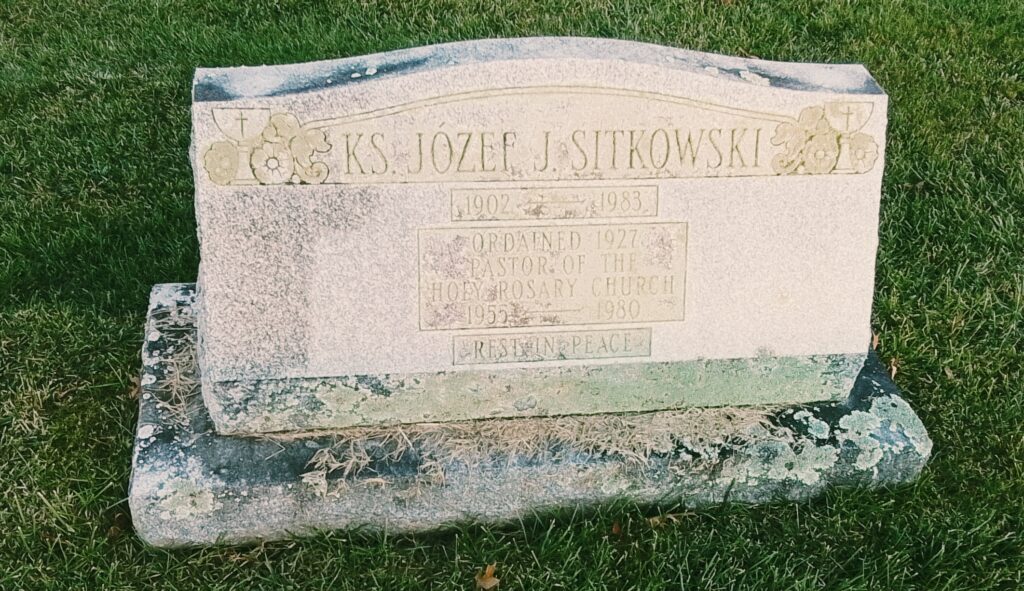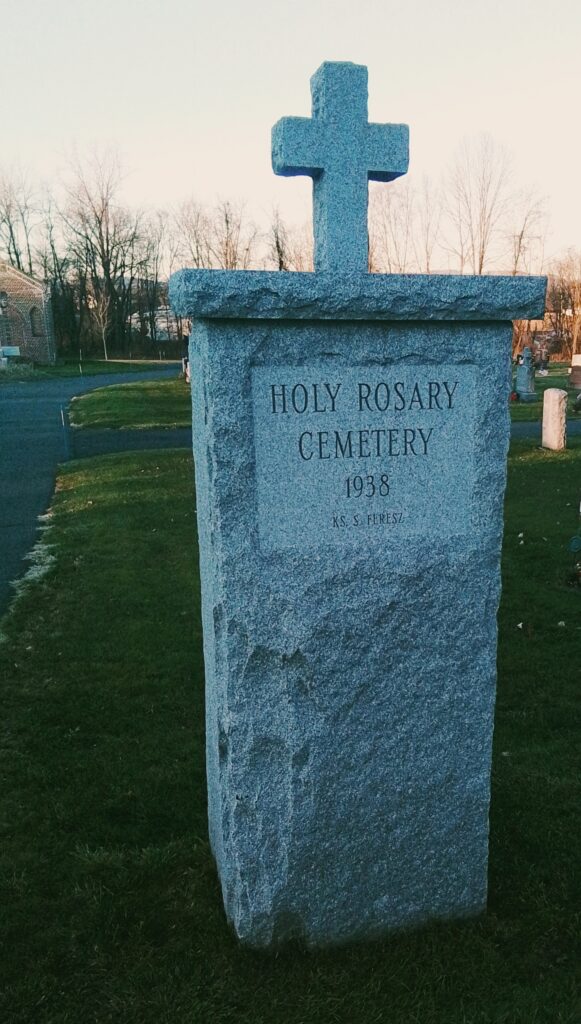Holyoke File Works

Holyoke History Room Photos
Warner Collection
Milan Warner LINK
Wilhelm Collection
Carl Robert Wilhelm LINK
View of the Mount Tom and Holyoke Ranges – LINK

The Mount Tom Range is to the left in this image and the Mount Holyoke Range is to the right. Mount Nonotuck is visible at left. Mount Norwottuck is at the far right. From right to left until the gap in the mountains for the Connecticut River is Round Mountain (now gone), Bare Mt, Mt Hitchcock, Seven Sisters, and Mt Holyoke. In the midground, from right to left is the First Congregational Church, the Robert Houston house, the Highlands Methodist Episcopal Church, and the Hampden Fire Station. (These have the backdrop of the Mount Holyoke Range.)
In the foreground is the Timothy Merrick house at extreme far right but only a bit visible. Then right to left: the Merrick carriage house and the James Ball mansion (which would become a home of the elderly). In the slightly left of center is a farmhouse that Oren Allyn would purchase and raze. He would build there in about 1907 a development of new homes. In the exact center is the bend of Westfield Road at Roosevelt Avenue. This would become the Roosevelt Triangle. The name “View from Ingleside” is correct since Ingleside was a vastly larger neighborhood in 1900. It included present day Ingleside plus Springdale, Whiting Farms, and southern Oakdale.
Indian Orchard Canal was built in 1846 in Springfield Massachusetts. It is 1400 feet long and 8 feet deep. It ranges from 60 to 80 feet wide since at its start it needs to draw in a lot of water but at its end much of the water has been released into tunnels below the mills. The walls are of brownstone.
The design to build it had been set in motion in 1837 as the Indian Orchard Canal Company. The construction was by Charles McClallan who did the Holyoke Canal and both Chicopee Canals. He built the Indian Orchard Dam and Gatehouse at the entrance to the canal. The dam is to divert water into the Indian Orchard Canal. It is made of brownstone. Its dimensions are 20 feet high and 402 feet long. The gatehouse has 7 gates and lifts them via rack and pinion.
The first mill was not until 1854 so canal water was not used until then.
MILLS
Lillie Company Mill – 1890 cotton and wool mill
Ward Manufacturing Mill – 1854 to 1859 cotton mill
Indian Orchard Mills Company – 1859 to 1890 cotton mill – made a mill 2
Indian Orchard Company – 1890 to 1938
United Electric Light Company – 1897
EXTRAS
Cottage Hill Grove – 1850 park
Myrtle Street School – 1868
Indian Orchard Branch Library
Rieutord Block
Mill Workers Homes
Hampden Street – 1850s eight cottages for the foremen of the mills
Worcester Street at corner with Chestnut – 1859 four cottage homes
Water Street and Centre Street – many homes for mill workers
Link to the retail page of the Indian Orchard Mills.
Sanborn map analysis:

Tour Route from west to east:










Gatehouse for the canal


First Congregational Church of Easthampton
This church is located at the junction of Main and Manhan Streets (now Northampton Street). This is opposite the park.
Methodist Episcopal Church was formed in 1863. In 1900 it was on Main Street near Town Hall. It stayed there for decades.
Saint Philip’s Episcopal Church in 1900 was on Union Street near the corner of Chapman. In 1910 it was at a new location – 128 Main Street.
German Evangelical Lutheran Church is located on Chapel Street in Easthampton Massachusetts. It existed from at least the 1900s to the 1930s.
Holy Rosary Cemetery was founded in 1926. The Holy Rosary Church was made in 1914 in Hadley. It was made of the the old Russell Church and replaced in 1973 with a new church. The convent is still there. Before that the people of Hadley attended the Saint Brigid’s Church in Amherst. There was a Saint John the Apostle Church in Hadley formed in 1902. This was an Irish church. It was a mission church of St Brigid’s from 1902 to 1915 and then a church on its own merits since. Cornelius F Donoghue FINDAGRAVE was the first pastor.
Stop 1 – Priests

PRIESTS SECTION



| Hadley pastor | |||
| Thomas Gralinski | FINDAGRAVE | no | obituary |
| Jozef J Sitkowski | FINDAGRAVE | yes 1955 to 1980 | obituary |
| Stanislaw Feresz | FINDAGRAVE | yes 1929 to 1945 | obituary |
| Robert F Slesinski | FINDAGRAVE | still | obituary |
| Julius Jaworek | FINDAGRAVE | obituary | |
| Jan Tolpa | FINDAGRAVE | assistant | obituary |
| FINDAGRAVE | obituary | ||
| FINDAGRAVE | obituary |
Stop 2 – Mausoleum




Stop 3 – Older Burials




Stop 4 – Gates


Stop 5 – Military People that Gave their lives for their Country


